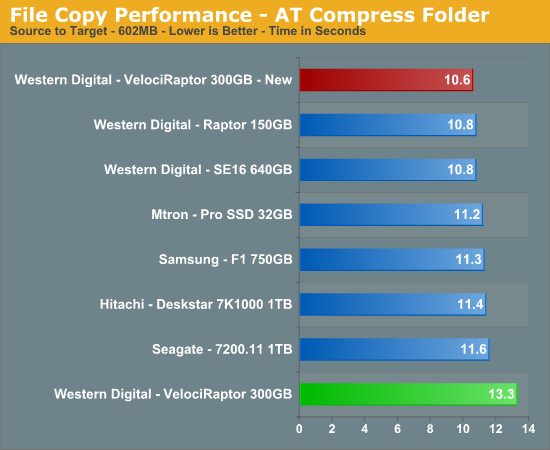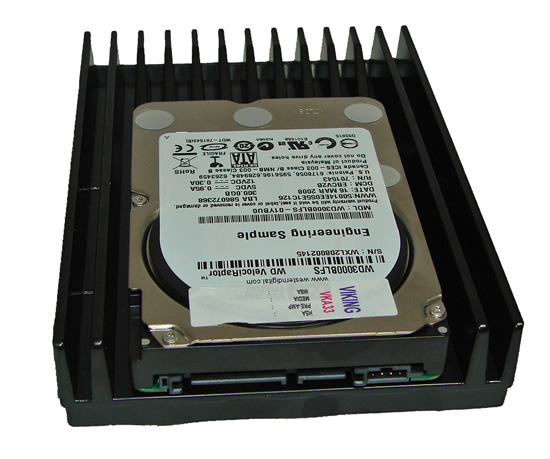Western Digital VelociRaptor: A Drive with a Bite
by Gary Key on April 22, 2008 4:00 AM EST- Posted in
- Storage
File Copy Performance
Our file copy test measures the time it takes to transfer our first test folder that contains 29 files, 1 folder, and has 7.55GB of data from our source drive to the target test drive. The second test folder contains 444 files, 10 folders, and 602MB of data. These benchmarks are disk write intensive and require a fast storage system.


We finish our application tests with benchmarks that should favor the Raptor family because it represents a pure write scenario where speed kills. In this case, our VelociRaptor got its talons handed to it. We ran these tests repeatedly with the same results for the most part. The sustained write performance of the VelociRaptor was continually hampered by the slowdown/speedup write operations on the outer tracks.

First Thoughts
We are actually not going to come to any conclusions yet on what appears to be a very impressive piece of engineering work from Western Digital. The VelociRaptor VR150 is indeed a huge leap in design - and in certain cases, performance - over the original Raptor. While the two drives share a common 10k RPM design, everything else about the drives, sans the warranty and black paint, is different.
Sometimes changing too much leads to disaster, but in this case, we are glad that Western Digital burned the Raptor blueprints and started over. The 2.5" form factor, low power consumption, and excellent acoustics will be appreciated in the enterprise market where saving money on energy and storage footprints are extremely important now, or should be. In a nod to the enthusiast sector that made the original Raptors kings of desktop performance, Western Digital did not leave us out in the cold, but instead provided the IcePAK chassis for our 3.5" form factor case requirements.
Our only problem at this point is that we could not complete our review. The early firmware problems caused havoc in our application benchmarks, so much so that we left out several results, as we knew the drive should perform better. Our comparisons against entry-level SAS drives suffered the same fate. Yes, the drive was extremely fast in IOMeter and other tests we ran, but we did not trust the results at this point. We expect new firmware and a new drive shortly and will finish our review at that time. Until then, this is one dinosaur we would not want to mess with.










31 Comments
View All Comments
johnsonx - Tuesday, April 22, 2008 - link
While I don't know for sure, I will say NO, at least not without some creative rigging.